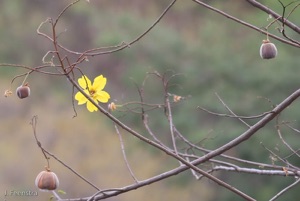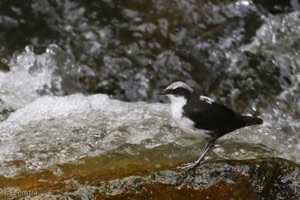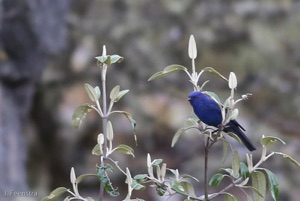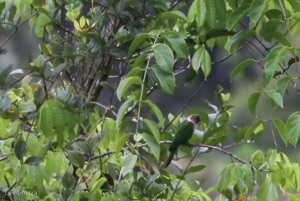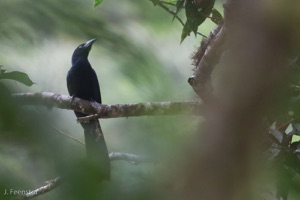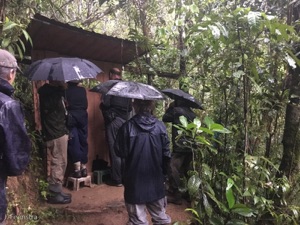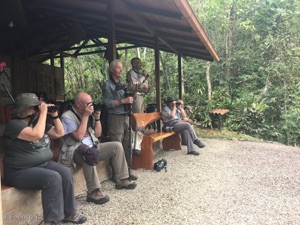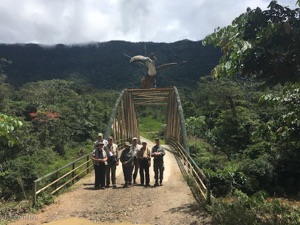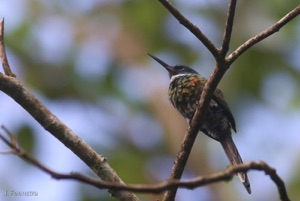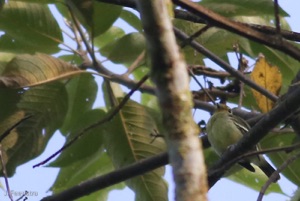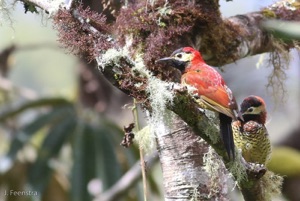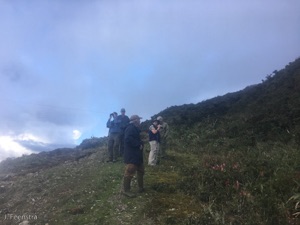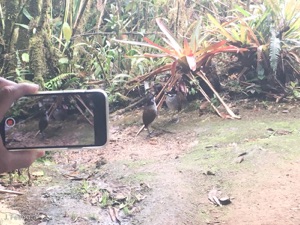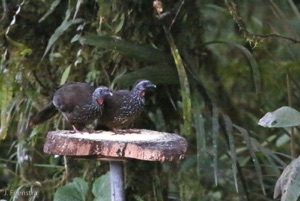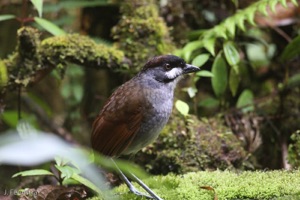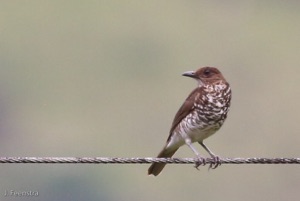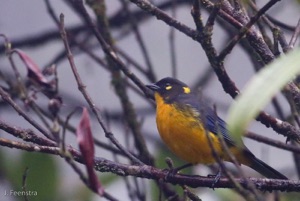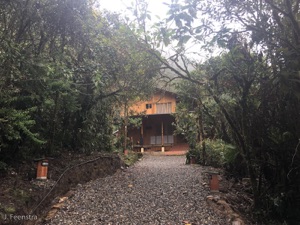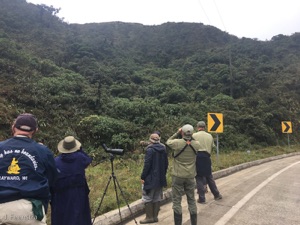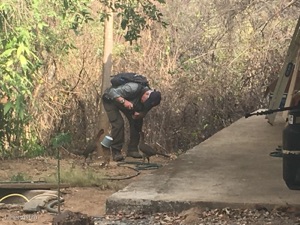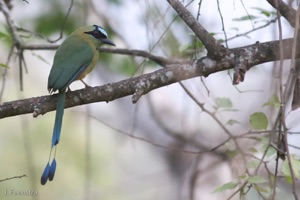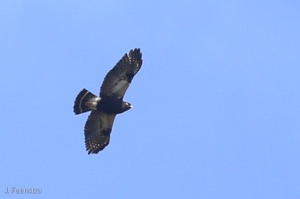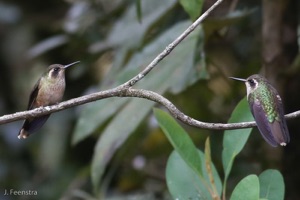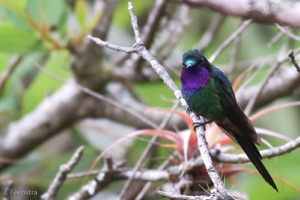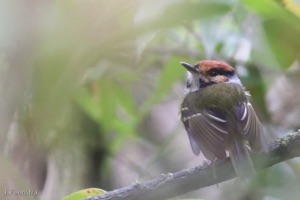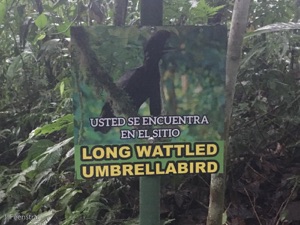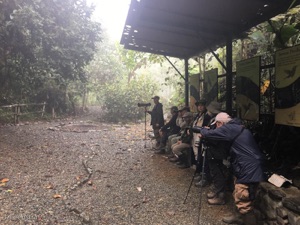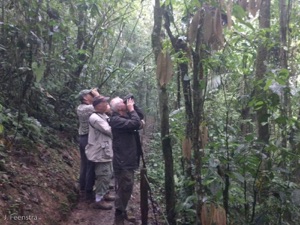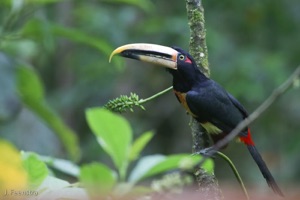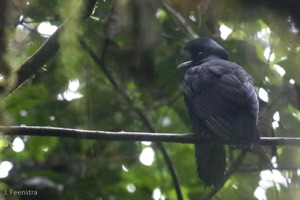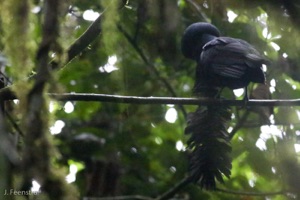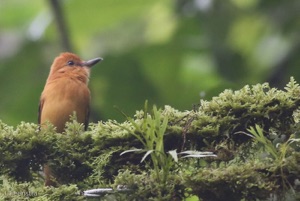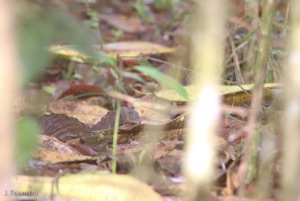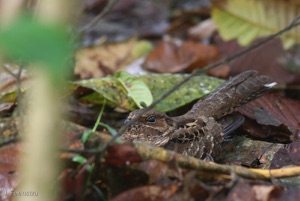This narrative is adapted from the account I wrote for the WINGS website HERE, but this one has photos!
The gang: Vicki, Carl, Larry, Bill, Steve, Robin, Sally, Jon (bird guy), Edwin (el conductor)
Up and down and all around southern Ecuador, it felt like we traveled far and wide to get into each valley and skirt every mountaintop. We visited habitats that seemed very foreign to each other: cold, high alpine tundra, dense lowland rainforest, arid scrub, tropical deciduous forest, and mangrove woodland. And, in each, we had fun finding the characteristic species that makes birding southern Ecuador so diverse and exciting. Some of the notables were ridiculous Long-wattled Umbrellabirds at display, the iconic Jocotoco Antpitta, isolated Orange-throated Tanagers, and endemic and endangered species such as Pale-headed Brushfinch, Violet-throated Metaltail, and El Oro and White-necked Parakeets. Many of these birds each within a short drive (or walk) from eco-lodges tucked away into the jungle.
The circuit through southern Ecuador meanders through a lot of change as we cross through arid rain shadows, humid jungles, above and below treeline, and across the continental divide back and forth. Each location and overlap of habitats securing its own ecological niche, with birds both generalist and specialist, and a few so special that they occur nowhere else.
We started at Cerro Blanco for our first toe in the water of dry forest birds. This is what much of Guayaquil used to look like, but where development has risen around, this forest reserve is still quite pristine and is brimming with the typical birds of this habitat. We saw a subtle Gray-and-gold Warbler, a few snappy Black-capped Sparrows, and hordes of bright Crimson-breasted Finches marauding through the treetops. At nearby Lago Chongon we picked up a couple of Snowy-throated Kingbirds, and some of the typical water birds of the western lowlands like Wattled Jacanas, Limpkins, and Snail Kites. From there we crossed Guayaquil and poked around a little in the dry forest on the edge of the mangroves adding Peruvian Pygmy-Owl, and dry forest tangle specialist Jet Antbird. Then we went up into the Andes: the roads got windy, the air got thin, and the trees got stunted, before dropping into the mountain valley and Cuenca where we spent the night.
Above: White-capped Dipper and Tit-like Dacnis, Parque Nacional El Cajas
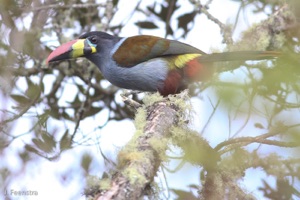
It was cool and partly cloudy the next morning and we had the day to spend in the high elevations of El Cajas National Park above Cuenca. We started at the “lower” elevation of only about 3000m in cloud forest. Our first stop, at a stream crossing, literally our first bird was a very cooperative White-capped Dipper that just did its thing amongst the rocks below us. A little further along, we had at least two gaudy and noisy Gray-breasted Mountain-Toucans working the canopy over the park office. From the cloud forest we went up, to treeline and the grassy paramo. We didn’t have too much trouble finding Violet-throated Metaltail, the name implies something more exciting than a drab little hummingbird, but it is nearly endemic to the park, so very special nonetheless. In the foreground of some spectacular alpine scenery we found a few groups of noisy Tit-like Dacnises, as well as the striking Ecuadorian Hillstar, and a couple of Red-rumped Bush-Tyrants, big, colorful flycatchers that give some flare to a generally drab family.
Though this next day we had a long day of transit, we had some really nice stuff along the way. The Yunguilla Reserve, of course, is pretty much the only place to see Pale-headed Brushfinches. They like being fed and we ended up seeing about 15 of them, nearly 10% of the entire population. We also got to see a couple of Chestnut-crowned Antpittas that apparently also like eating bread crumbs next to Brushfinches. We drove a lot of ups and downs after that on our way south and east, stopping a little for our first tanager flock that included Golden-crowned Tanager and Scarlet-bellied Mountain-Tanager. A trio of Gray-breasted Mountain-Toucans also put on quite a show right over us. The drive wasn’t too bad, and we traveled through some very scenic mountain countryside on our trip from the highlands to the foothill rainforest near Zamora.
Above: White-necked Parakeet at Podocarpus National Park and a Greater Ani on the road by Copalinga Londge
We spent almost the next entire day without driving anywhere. We began right down the road at Podocarpus National Park, walking the forest trail. We found a few decent flocks and picked up a bunch of new birds in this different habitat. A big highlight was a flock of the endangered and Ecuadorian endemic White-necked Parakeet that flew over (typical parakeet behavior) but then very nicely landed in a tree in front of us and fed cooperatively. One of the forest flocks also included a Black-streaked Puffbird, always a good one to actually see, as were the Amazonian Umbrellabird and Andean Cock-of-the-rock. That afternoon we mostly spent wandering around the lodge area, seeing Black-throated Brilliant, a Mottle-backed Elaenia, and an out-of-place Greater Ani. That was before we trekked up the mountainside in the rain and got to see the Gray Tinamou eating corn at the feeding station.
The next day began in the broken mists on the old road above Zamora. It was a great vantage point and the flocks were at eye level or below. Among the show of colorful tanagers were a few Golden-eared Tanagers, an “electric green” Orange-eared Tanager, and just plain gaudy Paradise Tanagers. A Red-headed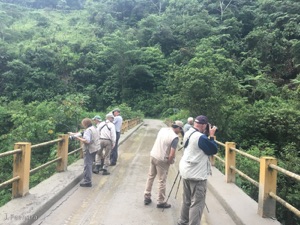
We battled a little more rain the next morning as we birded some patchy forest along the Rio Nangaritza near the new gold-rush mining area. The rain kept the temperature down, and when it stopped the forest was quite active. We found a White-browed Purpletuft sitting atop a tree, a nice Amazonian lowland bird more typically seen from some remote canopy tower. A Golden-winged Tody-Flycatcher was also a good one, a little bolt of color as it shot around through the vegetation. Before we left the area we also came across a Slaty-capped Shrike-Vireo calling incessantly under the canopy – posing long enough for some nice scope views. Then we said “good-bye” to the Amazon foothills and did our ascent to the cool heights of Loja.
Above: Purplish Jacamar and Wing-barred Piprites
We began our first of a few days in this high country with a full morning at the Cajanuma sector of Podocarpus National Park. We were at about 3000m elevation in the clouds and in the cloud forest. A few flocks came through and we got to see some Lacrimose Mountain-Tanagers, Capped Conebills, and Pearled Treerunners.
A pair of Crimson-mantled Woodpeckers was a highlight as they fed and interacted with each other. A male Masked Trogon over the road was also pretty impressive.
From there we crossed the thorn scrub valley to end up watching Chestnut-breasted Coronets doing battle at the hummingbird feeders in front of Casa Simpson in Reserva Tapichalaca.
The next day was a doozy. It’s hard to talk
about the rest of a day when it’s “The Jocotoco Antpitta Day.” There were other birds, of course, but for about 45 minutes we watched a pair of adult Jocotoco Antpittas and a juvenile eat worms, interact with each other, call, and put on a show right in front of us. It was truly amazing to see this rare, but also spectacular and charismatic bird. We did see a few other things, too, though. Golden-plumed Parakeet was nice, as were the pair of Powerful Woodpeckers, and the Hooded Mountain-Tanagers. We started the next day off right with another antpitta, three actually, Chestnut-naped Antpittas being fed by the lodge staff. It started raining pretty hard so we retreated to the porch of the lodge and an Undulated Antpitta came wandering by to poke around in the leaves of the path.
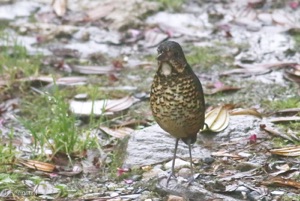
Not too shabby. We retreated from the rain by going down in elevation a little and it got us into some different birds. We had a few each of the well-named Flame-faced and Saffron-crowned Tanagers, as well as a ridiculous male Long-Tailed Sylph. After lunch we were chased by rain again up to the pass. It let up for us to see a few stunning Golden-crowned Tanagers among the other high elevation birds. Our final stop was on the way back to Loja in the dry country where we, after some work, got great looks at Elegant Crescentchest, a bird well worth the work.
Above: Bearded Guans, Jocotoco Antpitta, Maranon Thrush, Lacrimose Mountain-Tanager
After all the humid forest birding, today we went dry… or, sort of. We were in dry country, scrubland and forest, but it had recently seen a lot of rain, and we even got a little while wandering around. We made a few stops to find the characteristic birds such as Purple-collared Woodstar, Bay-crowned Brushfinch, and Chapman’s Antshrike. The now properly “split” Peruvian Tyrannulet also showed well, as did the not-yet-split Mouse-colored
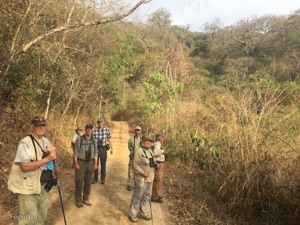
“Tumbesian” Tyrannulet. It was a good day, though, and a big contrast to the wet forests we’d been in for the previous several days. From Urraca Lodge in Reserva Jorupe we did some bird feeder watching for papaya-eating Whooping Motmots, then some river watching for Comb Ducks. Then we got into some tougher stuff in higher elevation forest working hard for that Black-cowled Saltator and snappy Rufous-crowned Tody-Flycatcher (plus more feeder watching for Purple-throated Sunangels and Rainbow Starfrontlets). In the afternoon we were back in Reserva Jorupe where we got Watkin’s Antpitta and Blackish-headed Spinetail, some of the specialties of the deciduous forest.
The Rufous-headed Chachalacas around the lodge were aggressive, to say the least! No permanent damage was done, but they tried. We spent another morning birding the dry forest reserve around our lodge.
Blue Ground-Doves were new for us and we had excellent looks at noisy and striking White-tailed Jays coming in to the food and water off the patio. It was just a morning, though, because in the afternoon we made the long drive from the dry forest to the wet forest of Reserva Buenaventura.
Above: White-rumped Hawk, Speckled hummingbirds, Purple-throated Sunangel, and Rufous-crowned Tody-Flycatcher
A full and exciting day of birding had us encountering one of the world’s rarest birds and one of the world’s strangest birds.
We began with El Oro Parakeets, 5 individuals, or a few percent of the global population. The reserve recently acquired some new adjacent property that will help in the continuing recovery effort for this species. A nice flock was
also moving around that area, too, and we picked up some good stuff like
Rufous-throated Tanager, Ashy-headed Tyrannulet, and a One-colored Becard. Then we watched hummingbirds, lots of hummingbirds. Among the fifteen species we saw were some notables like Velvet-purple Coronet, White-vented Plumleteer, and the diminutive Violet-bellied Hummingbird. Finally, the day ended with a lekking display by a male Long-wattled Umbrellabird in its absurd finery bellowing from the forest canopy.
Above: Collared Aracari, Long-wattled Umbrellabird, Ochraceous Attila
We started the morning birding around the lodge, first watching the hordes of hummingbirds doing battle at the feeders, and then wandering down the road to work the forest. We had some antbird encounters through the layers of wood and greenery, but, in contrast, had great looks at Song Wren, a typically deep dark denizen. We also had uncannily good looks at a pair of Ochraceous Attilas as they foraged near the ground. That was it for the rainforest, and we headed for the coast. After a giant seafood lunch we ended up at a freshwater marsh where we saw some Horned Screamers, Masked Water-Tyrants, and Vermillion Flycatchers. A nearby cane field fire was pushing out the insects and a flock of swallows, including Chestnut-collared Swallows, we whipping through snapping them up. Then it was time to wrap the whole thing up and get back to civilization. The crush of traffic into Guayaquil was certainly a contrast to our trip of epic mountain vistas, pristine natural habitats, and a massive diversity of tropical birds.
(Want to see the photos and crowd-sourced identifications of the non-birds? Check out iNaturalist by clicking HERE.)

